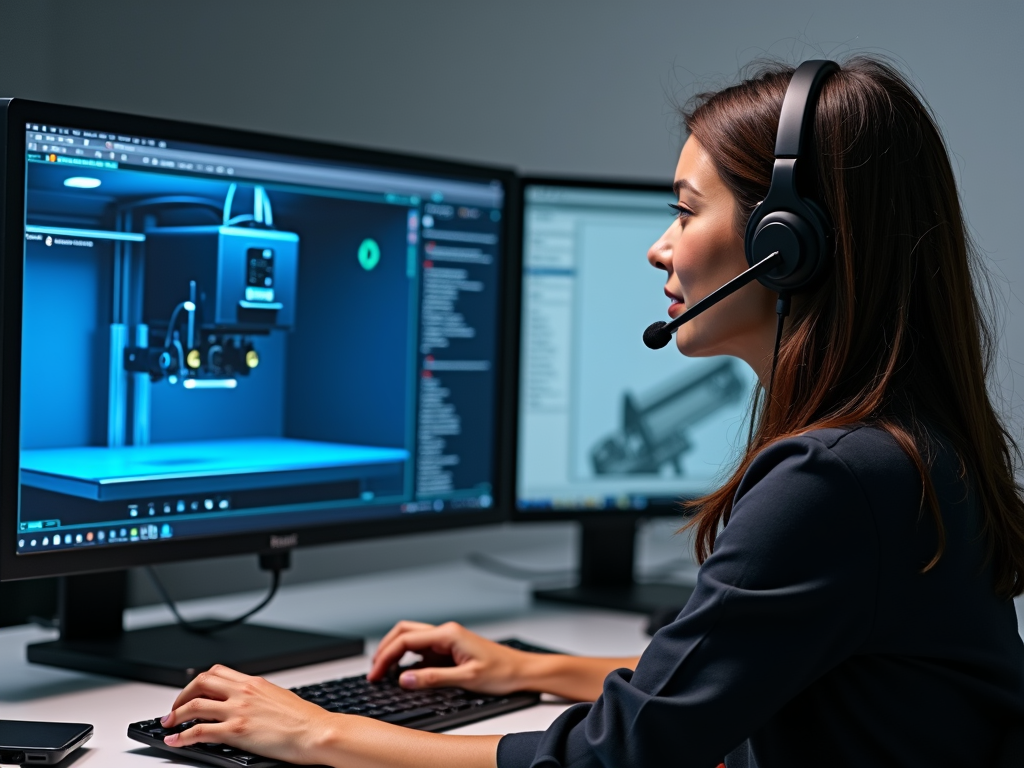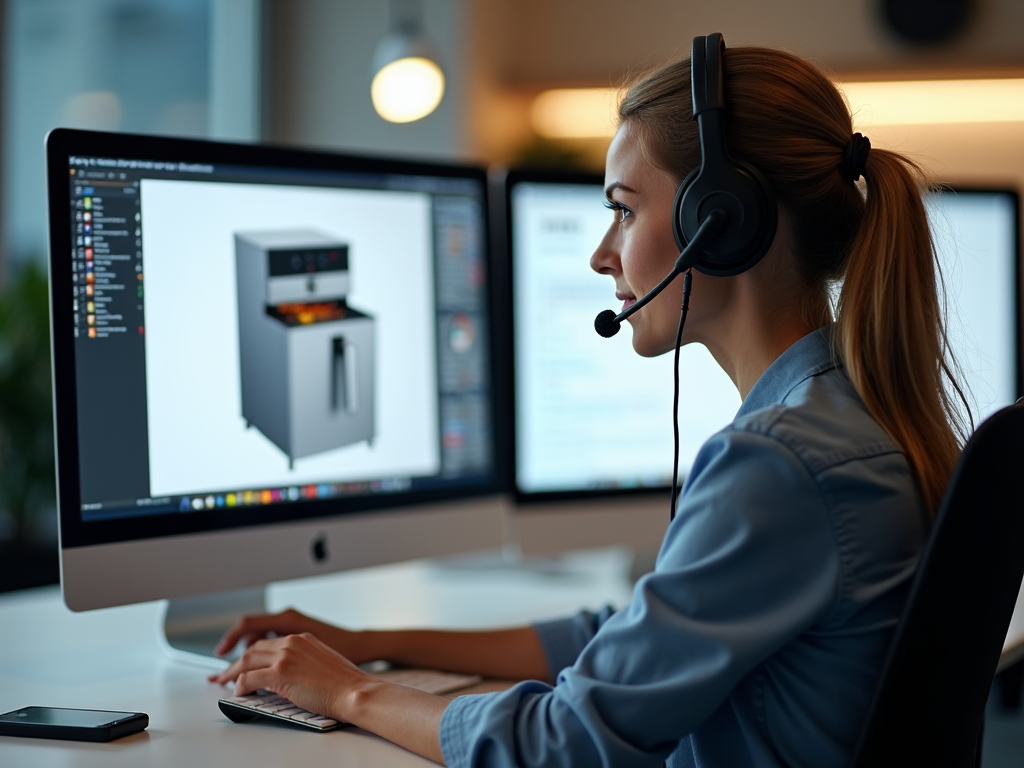Modern Tools for a Modern Kitchen: How Food Equipment OEMs and Service Providers Are Embracing Live Video to Elevate Service
In the high-stakes world of food service, where a malfunctioning fryer can throw off an entire lunch rush, time is more than money—it’s reputation. As the quick-service restaurant (QSR) industry accelerates, the equipment providers and service companies behind it face a mounting challenge: how to deliver fast, accurate, and scalable support across a growing customer base.
The answer? Live video support.
Once a novelty, live video is quickly becoming a critical tool in the modern service tech stack for Original Equipment Manufacturers (OEMs) and service providers. Whether it’s troubleshooting a coffee machine, identifying a faulty valve in a commercial oven, or guiding a franchisee through routine maintenance, live video is reshaping how equipment issues are identified, diagnosed, and resolved.
The Problem: When Downtime Is a Dealbreaker
For foodservice brands, equipment issues are more than inconvenient—they’re existential. A broken ice machine on a summer day, a jammed grill before the breakfast rush, or a misfiring espresso machine can mean lost sales, unhappy customers, and stressed staff.
Traditionally, resolving such problems relied on dispatching a technician to the site. But this model is expensive, slow, and often inefficient. Sometimes the technician arrives without the necessary parts, or worse—only to discover the issue could’ve been resolved remotely.
This is where live video support steps in as a game-changer.
A Visual Revolution in Service and Support
Imagine a technician guiding a restaurant manager through a repair—not over a vague phone call filled with guesswork—but via a high-quality live video session. That’s exactly what modern video support tools enable.
Leading platforms now allow technicians to send a simple link via SMS or email. When the end user clicks the link, their smartphone camera becomes a remote diagnostic tool—streaming live visuals of the faulty equipment directly to a support expert. No app downloads. No tech-savvy required.
Case in Point: TFI Canada
One standout example is TFI Canada, a leading distributor of specialty foodservice equipment. The company recently integrated Blitzz's app-free live video platform into its customer service workflow, with transformative results.
Rather than relying on phone descriptions or static photos, TFI agents can now see exactly what the customer sees in real-time. They guide users through simple repairs, verify part numbers, and accurately assess whether an on-site visit is necessary.
The results? Reduced downtime, fewer unnecessary truck rolls, and higher customer satisfaction.
Another Success Story: Dansons
TFI isn’t alone. Dansons, maker of Pit Boss and Louisiana Grills, also turned to Blitzz to support live video diagnostics and repair assistance for customers..jpg?width=318&height=477&name=Untitled%20design%20(1).jpg)
This move comes as the grill industry begins bracing for a spike in service demands. A recent piece in Cookout News highlights that as high-end outdoor appliances age, repair volume is expected to grow—making tech-forward service strategies not just smart, but necessary.
Why Live Video Works
1. Visual Accuracy Beats Verbal Ambiguity
Describing a piece of equipment over the phone is prone to error. Live video removes the ambiguity. Technicians see the exact model, the exact issue, and even the serial number. This dramatically improves the accuracy of remote diagnostics.
2. Empowering the Front Lines
Franchisees and store managers are empowered to become part of the solution. Technicians can walk them through basic fixes and isolate the problem in real time.
3. Reduced Operational Costs
By filtering issues through video triage, OEMs and service teams reduce truck rolls and only dispatch when absolutely necessary—saving time and money.
4. Scalability Without Hiring Sprees
With live video, a single expert can assist more customers remotely, increasing efficiency without bloating support teams.
A Broader Shift: Tech-Forward Service in the Food Industry
Live video is part of a larger shift toward smarter, leaner service delivery. Platforms like Blitzz offer lightweight, secure, app-free remote support designed for field service use cases. The result? Higher first-time fix rates and happier customers.
Human-Centered Tech That Just Works
Adoption is intuitive. Most users require minimal onboarding. Once they experience a remote fix, the benefits are clear. For technicians, it’s a boost in efficiency and job satisfaction.
What’s Next: A New Standard in Service
The food equipment industry is no longer a slow adopter. As expectations rise, live video is fast becoming a must-have for modern service strategies. It’s not about replacing field techs—it’s about augmenting their reach and delivering service at scale.
Final Thoughts
Live video support is no longer “the future”—it’s here. For OEMs and service providers in the food equipment space, it’s the key to staying competitive in an industry where every minute of uptime matters.
Whether you’re a global OEM or a regional distributor, now is the time to modernize your tech stack—so your team can see the problem clearly, solve it faster, and support your customers like never before.
What is live video support in the context of food equipment service?
Live video support allows technicians or customer support agents to view equipment issues remotely through a smartphone camera. Customers simply click a link—no app required—to start a live video session, helping agents diagnose problems, identify parts, and even guide basic repairs in real time.
How does live video reduce equipment downtime in restaurants?
By allowing service agents to visually inspect equipment remotely, live video minimizes the need for guesswork and on-site visits. This results in faster diagnosis and resolution, reducing costly downtime for busy foodservice operations.
What are the main benefits for OEMs and service providers?
- Lower service costs by reducing truck rolls
- Improved first-time fix rates
- Empowered customers and franchisees
- Scalable service delivery without hiring additional technicians
s live video support secure and easy to use?
Yes. Most platforms, like Blitzz, are browser-based and require no downloads. Sessions are encrypted and designed for ease of use, even by non-technical staff, making it ideal for QSR franchisees, small operators, and large enterprises alike.
Which companies are already using live video for equipment support?
Companies like TFI Canada and Dansons (makers of Pit Boss and Louisiana Grills) have successfully implemented live video support, reducing downtime and improving customer experience.
Is the grill and outdoor appliance industry also affected?
Yes. As noted by Cookout News, the grill industry is bracing for a rise in repairs as equipment ages—making proactive, tech-enabled service like live video more relevant than ever.
.png?width=120&height=55&name=Blitzz-Logo-right%20white%20eyes%20-%20not%20transparent%20(3).png)


